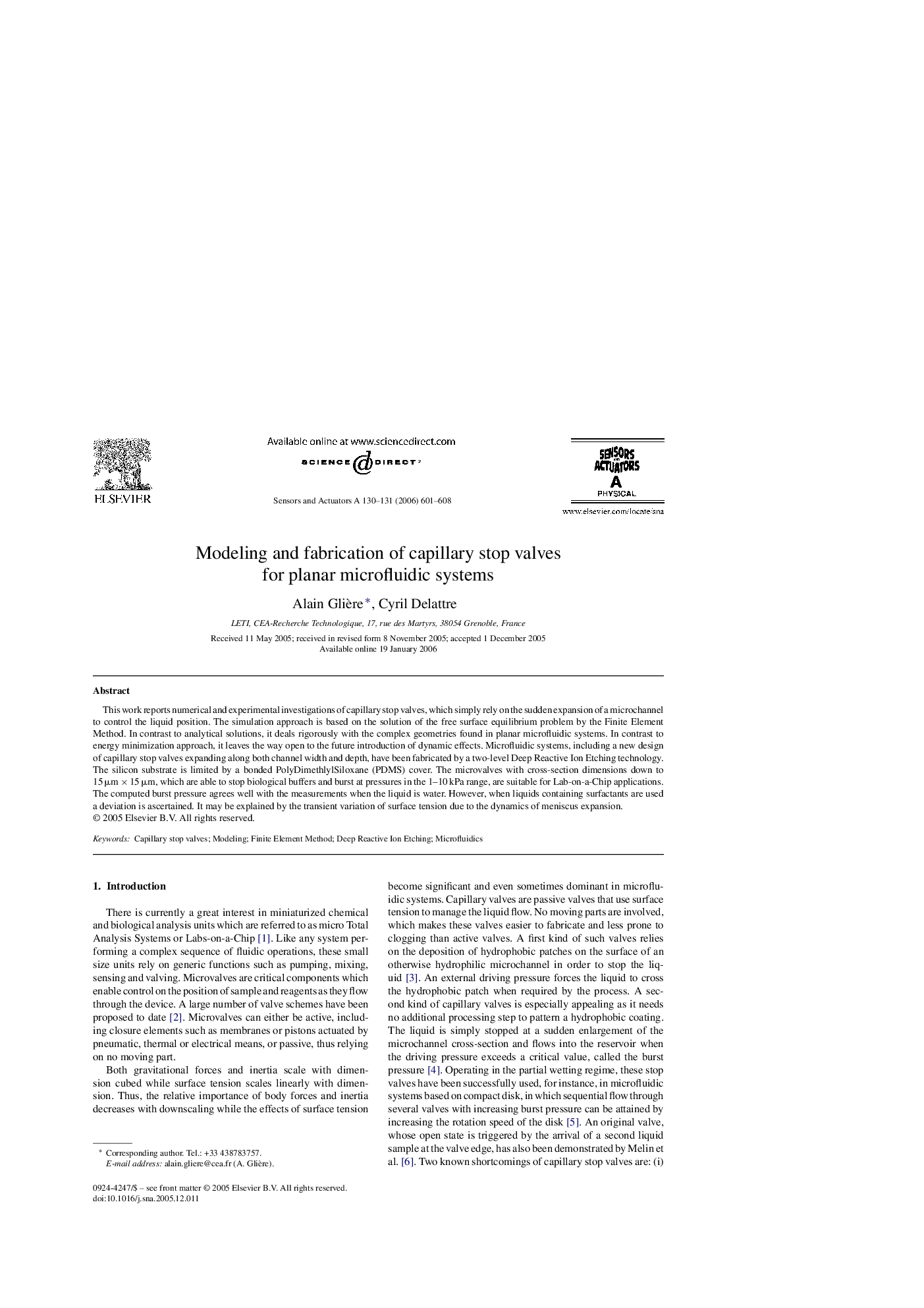| Article ID | Journal | Published Year | Pages | File Type |
|---|---|---|---|---|
| 750182 | Sensors and Actuators A: Physical | 2006 | 8 Pages |
This work reports numerical and experimental investigations of capillary stop valves, which simply rely on the sudden expansion of a microchannel to control the liquid position. The simulation approach is based on the solution of the free surface equilibrium problem by the Finite Element Method. In contrast to analytical solutions, it deals rigorously with the complex geometries found in planar microfluidic systems. In contrast to energy minimization approach, it leaves the way open to the future introduction of dynamic effects. Microfluidic systems, including a new design of capillary stop valves expanding along both channel width and depth, have been fabricated by a two-level Deep Reactive Ion Etching technology. The silicon substrate is limited by a bonded PolyDimethlylSiloxane (PDMS) cover. The microvalves with cross-section dimensions down to 15 μm × 15 μm, which are able to stop biological buffers and burst at pressures in the 1–10 kPa range, are suitable for Lab-on-a-Chip applications. The computed burst pressure agrees well with the measurements when the liquid is water. However, when liquids containing surfactants are used a deviation is ascertained. It may be explained by the transient variation of surface tension due to the dynamics of meniscus expansion.
